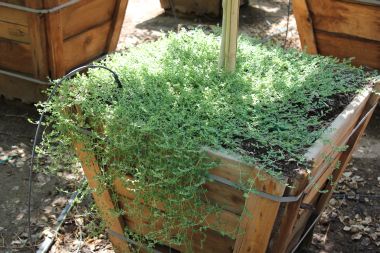Link here for the full WSSA press release
Battling Spurge: WSSA Offers Weed Control Tips for Nurseries and Homeowners
Though the economy and housing market have begun to recover in the aftermath of the Great Recession, one unexpected impact still lingers. Landscape nurseries that saw fewer plant sales during the downturn are now battling weeds entrenched in unsold containers of perennials, shrubs and trees.
Some of the most common weeds battled by nurseries are in the spurge or Euphorbiaceae family, a group of low-growing plants that thrive in hot and sunny locations. Examples include sandmat and the spotted and prostrate spurges.
“The nursery owners I work with here in the Southwest say spurge is their number one pest problem and a real health hazard for their workers,” reports Kelly Young, a member of the Western Society of Weed Science and assistant agent for the University of Arizona Cooperative Extension.
When the stems or leaves of spurge plants are broken, they ooze a milky sap that can cause dermatitis and eye irritation. Dense, low-growing mats of spurge foliage can also harbor fire ants, ginger ants, red ants and other insects with a venomous bite or sting, which place nursery workers at risk.
“Workers loading plants onto a delivery truck will frequently hand-weed each pot so it looks pristine and weeds aren’t transported to the job site,” Young says. “That means there are lots of opportunities for insect bites and for exposure to the irritating sap.”
Weed scientists say early intervention is critical to spurge control. The spurges flower when very young and produce seeds that can germinate right away, with little or no dormancy. As a result, spurge weeds often spread quickly.
Young offers the following tips that can help nurseries gain the upper hand and eradicate spurge from plant containers:
- Pull it up. Remove all spurge you find growing in pots to prevent further seed production. Wash your hands and forearms thoroughly afterwards, even if you were wearing gloves.
- Use the right herbicide the right way. Apply a preemergent herbicide according to the precise instructions on the product label. It’s especially important to calibrate your sprayer to make certain you’re not using too little or too much. “I’ve seen nurseries apply herbicides at only half the recommended label rate, and they weren’t getting the results they were after,” Young says.
- Add water. Preemergent herbicides used to treat spurge need to be watered into the soil to form a protective barrier.
- Add mulch. Top off each pot with a two-inch layer of compost, manure or wood chips.
- Keep your hands off. It may be tempting to dip a finger into a pot from time to time to see if plants need to be watered. But doing so will break the protective shield established by the herbicide and create an opportunity for weeds to sprout.
- Establish a zero tolerance policy. If you spot spurge that has escaped control, pull it immediately. Don’t toss the plants on the ground or you could spread hundreds of tiny seeds.
“I’ve worked closely with nursery managers who were convinced nothing would work against spurge,” Young said. “Invariably, though, I discovered missteps in how they were trying to manage the weed. They weren’t applying herbicides in the right amount, weren’t watering the herbicides in or were skipping some other vital step. Once they buttoned up their process, they were able to eliminate the weed entirely.”
Spurge control tips for homeowners
Rich Bonanno, Ph.D., a member of the extension faculty at the University of Massachusetts, says spurge isn’t found only in nurseries. It is a frequent, unwelcomed guest in lawns and gardens and in crevices along sidewalks, driveways and parking pads. And it can overrun other desirable plants growing in its path.
There are steps homeowners can take to manage spurge effectively, though. If you are adding new plants to your landscape, make certain you aren’t transporting spurge home from the nursery. Closely inspect pots for weeds before planting new trees, shrubs or perennial plants. Also, follow the protocol recommended for nurseries and apply a thick layer of mulch around your new plants.
If you choose to use a preemergent herbicide on your lawn or plant beds to protect against spurge and other weeds, use the right amount, apply it according to the label directions and water it in. Scout for spurge through the summer and pull any seedlings that have escaped control – being careful to wash your hands thoroughly when you are done.
“With a little vigilance, you can keep spurge in its place,” Bonanno says.
About the Weed Science Society of America
The Weed Science Society of America, a nonprofit scientific society, was founded in 1956 to encourage and promote the development of knowledge concerning weeds and their impact on the environment. The Weed Science Society of America promotes research, education and extension outreach activities related to weeds, provides science-based information to the public and policy makers, fosters awareness of weeds and their impact on managed and natural ecosystems, and promotes cooperation among weed science organizations across the nation and around the world. For more information, visit www.wssa.net.
